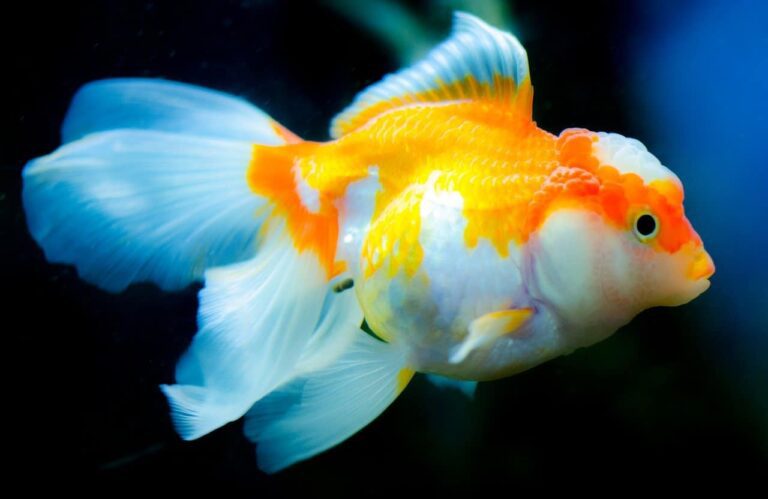There are many blue freshwater fish that you can add to your aquarium. They range from blue betta fish with a metallic coat to gourami with shimmering blue fins and many more. While some are easy to keep, others are best suited for advanced aquarists. Below is a look at 9 of the most gorgeous blue freshwater fish.
1. German Blue Ram
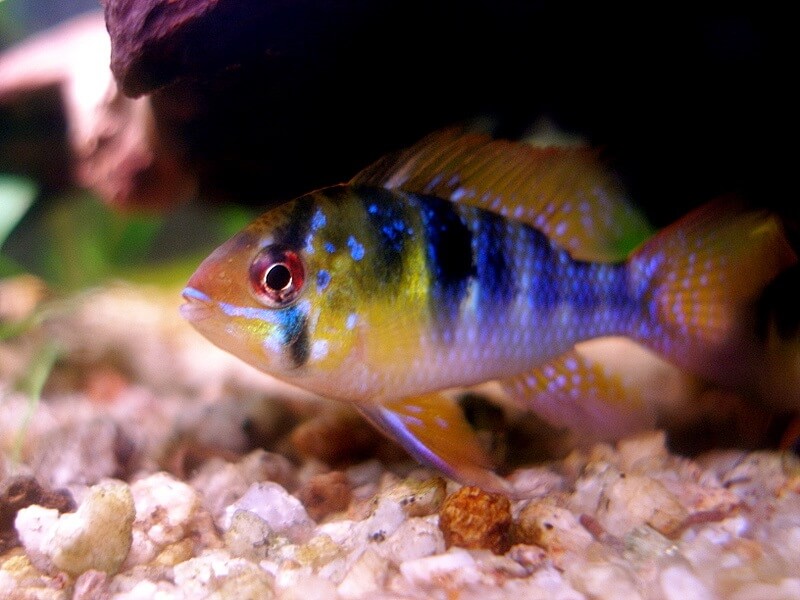
The German blue ram, also known as ram cichlid, is a peaceful and easy-going community fish. The base color of the body is silver or gold, with black markings on the head, dorsal fins, and sides of the body. The fins are slightly red or orange at the tips. It has distinctive blue accents throughout the body.
It is a small fish with an average size of two to three inches. Males and females resemble each other, although females are typically smaller and less vibrant than males. Also, males are bluish at the mid-lateral blotch. The fish are breeders. They have a life expectancy of two to three years.
The mid to bottom dweller fish originates in South America—Venezuela and Colombia. It is unsuitable for a beginner pet fish because it requires strict water quality and conditions. It requires water temperatures between 80 and 86F and a PH range of 5.0-7.0.
You require a minimum tank size of 20 gallons to keep a German blue ram. You will require a larger tank if you intend to keep them in a school or a community with other species. They pair well with other peaceful cichlids, such as the kribensis cichlid and blood parrot cichlid.
2. Neon Tetra
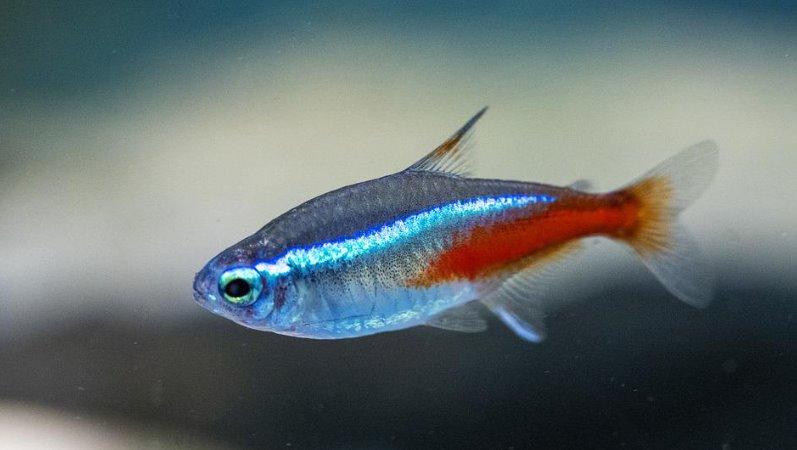
Neon tetras are among the easiest fish to keep, so they are suitable for beginners. They are beautiful, small, hardy fish from South America—South Columbia, Western Brazil, and Peru.
The neon fish has a slender body that grows to about one and a half inches. Its body is torpedo-shaped. They are colorful, making them easily visible even in blackwater conditions.
They have a blue neon stripe from the tip of the nose to the adipose fin. The belly area is silver with a red stripe up to the tail. The combination of colors makes the neon fish one of the most popular aquarium fish.
They are mid-dwellers that require a minimum tank size of 10 gallons. Their pH, water temperature, and hardness are 7, 68-79F, and 10dGH and below, respectively. They are shoaling species that thrive in schools of at least six.
These peaceful fish also do well in a community fish tank alongside other non-aggressive fish species, such as small catfish, corys, rasboras, and dwarf gouramis. However, do not put them with predator fish such as larger tetras.
Neon tetras have a lifespan of five years or more. They are omnivorous and feed on live food, such as brine shrimps, daphnia, bloodworms, fish flakes, and plants.
3. Electric Blue Crayfish

The scientific name for the electric blue crayfish is Procambarus alleni. It is also commonly referred to as sapphire crayfish, blue crayfish, or Florida crayfish. The critters come from the United States and thrive in aquariums. They are hardy fish that require minimal care and maintenance. You just need to provide the basic aquarium supplies.
The fish stand out for their bright cobalt blue color with dark and white spots throughout the body. They resemble lobsters in appearance except that they are smaller. Besides, there are no freshwater lobsters. They have tough skeletons and shed their shell multiple times throughout the year as they become bigger. They have an average life expectancy of 4-6 years.
They require a minimum tank size of 10 gallons for younger ones. However, a 30-gallon tank is more suitable for adults. The ideal water parameters are a temperature range of 65-75, 6.5-7.5 pH, and 3-10dh water hardness level. The fish like to eat aquarium plants, so they are not suitable for a garden-type low-maintenance aquarium. Crayfish produce a lot of waste, requiring a powerful filtration system.
The only unique requirement when setting up a blue crayfish aquarium is to provide an artificial cave for it to hide. You can use PVC pipe or an overturned pot as long as it is relatively big. You can also add driftwood to provide additional hiding spots.
4. Betta Fish

Also known as the Siamese fighting fish, betta fish are one of the most popular and easiest fish to take care of. They are small fish but quite hardy. The males are aggressive toward each other but not toward the females. Therefore, females can live together in a school.
They also make good tank mates with other small, non-aggressive fish, such as zebra danios and tetras. Notably, selectively bled blue betta fish are more docile than other varieties. They grow to an average length of three inches and have a life expectancy of two to three years.
The betta splendens species come in a variety of colors. The blue betta fish, whose scientific name is betta smaragdina, is solid blue throughout its body, though it may have markings of a different color on different parts of the body. The color blue hue in blue betta fish can range from deep blue to turquoise.
If you are keeping a lone blue betta fish, you will require a minimum tank size of three gallons. The fish thrive in slightly acidic conditions at a PH range of 6.8-7.5 and a water temperature range of 75-86F. Although betta fish have a high ammonia tolerance, installing a filter in the tank is recommended.
5. Dwarf Gourami

Like the betta fish, the dwarf gouramis are labyrinth fish. Labyrinth fish are called so as they have a labyrinth organ, which enables them to breathe air from the surface of the water if the oxygen levels are low. Typically, the fish are small and hardy, thus easy to keep. They originate in Asia—India, Bangladesh, and West Bengal. Their scientific name is trichogaster lalius.
Dwarf gouramis come in different colors. Specific varieties that are blue. For example, the coral blue dwarf gourami’s body is predominantly blue with an underlying orange hue. Others are predominantly red-orange with turquoise-blue stripes that extend to the fins, while others have a solid red color throughout the body, but the dorsal fins are blue.
Dwarf gouramis are omnivorous and eat live foods, plants, and algae. They are tropical fish that thrive in water temperatures of 72-82F. They do well in neutral or slightly acidic water—6.0 to 7.5 pH. They are mid-to-top dwellers and require a minimum tank size of five gallons.
6. Blue Gourami
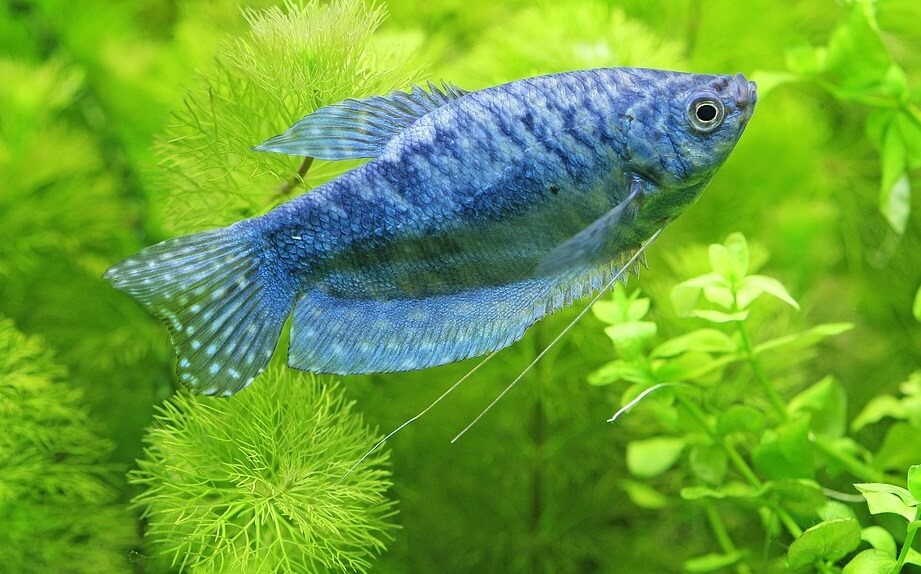
Its scientific name is trichopodus trichopterus. Like the dwarf gourami, the blue gourami species come in various varieties, but not all are blue. The blue gouramis are predominantly blue with white patches. They grow up to five inches long and require a minimum tank size of 50 gallons. They thrive in neutral, slightly acidic, or basic water parameters within a pH range of 6-8.
They are aggressive and territorial. Therefore, they should not be paired with other territorial fish such as guppies, goldfish, bettas, and dwarf gouramis. But they make great tank mates with danios, mollies, loaches, channel catfish, cardinal tetra,
7. Blue Catfish

A blue catfish is a good option if you want to keep a bigger, colorful freshwater aquarium fish. Also known as the humpback blue or channel catfish, advanced aquarists love them. The blue catfish is mainly slate blue and may have numerous small black spots throughout the body. You require a large and strong aquarium to keep it as it grows up to 5.5ft long and can reach a weight of up to 100lbs.
The tropical freshwater fish is commonly found in the Atlantic side of the US, Guatemala, and Mexico. For it to thrive, you need to replicate similar conditions with water temperatures averaging 78-82F. The aquarium should have numerous decorations, including rocks, to provide adequate hiding spots. You will also need a large filter.
Blue catfish are easy to feed. They are carnivorous, so you can feed them with shrimp, crab meat, mollusk, and fish. They can live for up to 25 years.
8. Peacock Cichlid

The peacock cichlid is an African Cichlid. Its scientific name is cichla ocellaris. It is an exotic fish with a mellow personality. It is also low-maintenance. There are different types of peacock cichlid. They vary in color.
The most common ones include the red peacock cichlid—red, strawberry peacock cichlid—pinkish red, blue peacock cichlid—blue, OB peacock cichlid—red with dark blue patches, and dragon blood peacock cichlid‑subtle dotted pattern.
Peacock cichlids grow up to a maximum length of four inches. The recommended tank size is 55-60 gallons, allowing them ample swim space. Keep water temperatures at 75-82F and pH levels 7.5-8.5.
For decorations, add hardy plants such as hornwort, rocks, and driftwood to provide them with hiding spaces. Do not put live plants as they like to dig, so they will uproot the plants.
Peacock cichlids are omnivorous. Give them live foods such as insects, larvae, crustaceans, pellets, and vegetables. They also love to hunt, so you may want to offer them feeder insects.
9. Discus
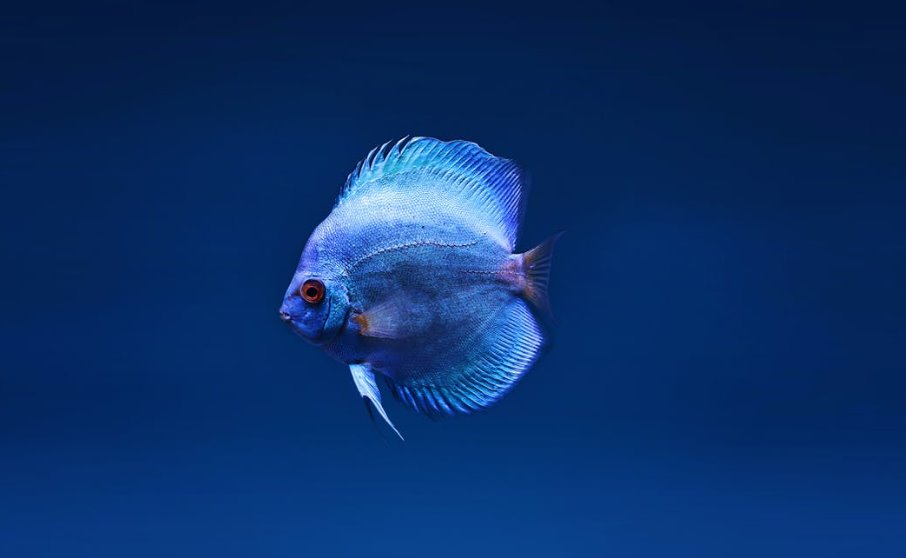
Discus fish, whose scientific name is symphysodon, come in a wide range of colors, including blue. The exotic fish are a genus of the cichild. They are beautiful, generally calm, and peaceful but can be aggressive towards other cichlids, such as the jaguar cichlid.
However, they are difficult to keep as they require strict control of the water parameters. The ideal water temperature is 85-86F. It is such a narrow temperature range, and maintaining it can be an uphill task.
They require a large freshwater aquarium with a minimum tank size of 75 gallons. They can grow up to seven inches long. Since they are schooling fish, they do better in a group with their kind. Therefore, you may require an even bigger aquarium.
Depending on the tank size and how many fish you have, you may need to change the water daily or every other day. You also require a high-quality filter. For decorations, add air stones and plants that can tolerate high temperatures, such as sword plants.
Conclusion
Blue fish are beautiful and make your fish tank more aesthetically appealing. If you are keen to incorporate blue fish into your aquarium, there is a wide range of options. We have highlighted 9 gorgeous blue fish to consider. They have specific care and maintenance needs. While some are small and hardy, others are bigger and require intricate care. Choose according to your preference and skill level.



